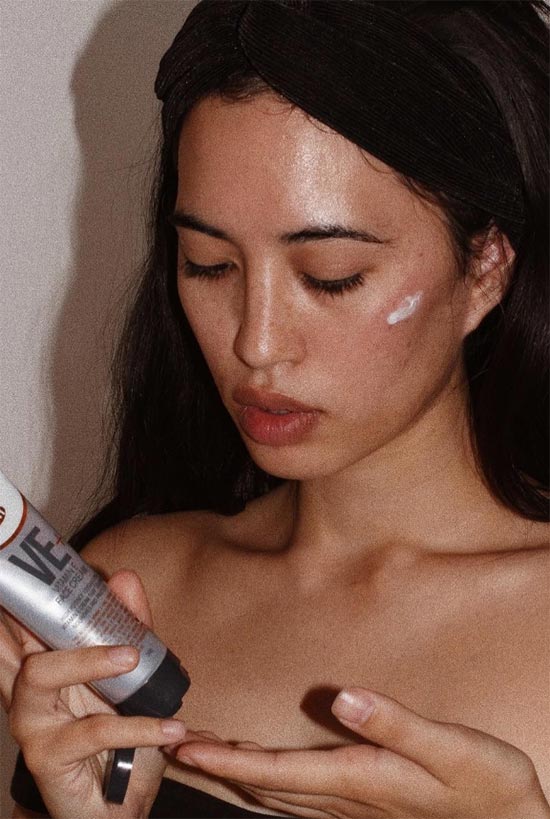Smile lines are especially troublesome for makeup wearers because they’re a place where foundation seems hellbent on gathering and creasing. I think it’s important to remember that a prominent nasolabial fold is not necessarily ugly or unappealing. The culture tells us that women should be ashamed of any visible signs of aging, which is infuriating, but I’d be lying if I didn’t tell you that I’m annoyed by the changes I’m starting to see on my face. Laugh lines are definitely the first of those signs I’ve started to notice.
Below, I explain exactly what nasolabial folds are and how smile lines are formed. I cover what options you have for nasolabial fold fillers and treatments, as well as what you can do to try and prevent them.
In this article:
- What Are Nasolabial Folds/ Smile Lines?
- What Causes Smile Lines?
- How to Get Rid of Smile Lines? Nasolabial Fold Treatments
- Can You Prevent Laugh Lines?
What Are Nasolabial Folds/ Smile Lines?
The nasolabial folds are the folds that exist between our upper lip and cheeks. They are a groove that normally starts at the outer part of the nostril and ends at the corners of the mouth.
When we are young, the nasolabial fold is usually not obvious at all until we smile, but as we begin to age the fold usually deepens or becomes more pronounced even while the face is at rest. As with many other small signs of aging, they are strictly an aesthetic concern, which doesn’t mean it isn’t a legitimate thing to worry about it.
What Causes Smile Lines?
Smile lines are a natural part of aging, and like all other facial lines, they show up for pretty much the same reason. To understand the smile lines, it’s important to understand how a wrinkle is formed. As we age our skin becomes less capable of producing collagen, the protein that keeps our skin firm, and elastin, the protein that allows our skin to resume its shape once stretched.
Wrinkles correlate with facial muscle action. As our skin begins to lose those specific proteins, it is unable to keep its shape following regular facial expressions. Facial wrinkles follow a pattern that directly correlates with how our muscles move underneath.

The lines on the nasolabial fold are often called smile lines because they are correlated with the way our skin bunches up when we smile. In a way, these are the best wrinkles, because they suggest one has led a happy life!
While the loss of collagen and elastin as we age is completely natural and unavoidable, there is also a non-genetic element that comes into play. That element is free radical damage, which comes from various destructive sources including sun exposure, pollution exposure, and cigarette smoke.
Free radicals are molecules with an unpaired electron, which makes them very reactive. They will pull electrons from other molecules, thereby turning those molecules into free radicals and leading to a destructive chain reaction that changes molecular structure and damages the cell. In the long term, this cumulative damage seriously contributes to skin aging.
Because this damage comes from outside sources, we call it ‘extrinsic aging’ or ‘premature aging’, as opposed to the unavoidable natural aging process, which we call ‘intrinsic aging’. There are a few ways to prevent extrinsic aging, including wearing sunscreen, not smoking, and using skin care rich in antioxidants, which are ingredients that are able to neutralize free radical reaction.
How to Get Rid of Smile Lines? Nasolabial Fold Treatments
From cosmetics to surgery, there are different ways to get rid of smile lines, but which are the most effective though?
Skin Care
Topical skincare products can help smooth out or lightly plump up the area of those smile lines, and they can also help prevent them from becoming worse by encouraging collagen renewal. That being said, topical skin care alone cannot totally eliminate nasolabial fold wrinkles, which are the result of lack of collagen below the epidermis.
However, the right ingredients, along with a routine that involves regular cleansing and moisturizing, can help. Look for skincare products with the following ingredients:
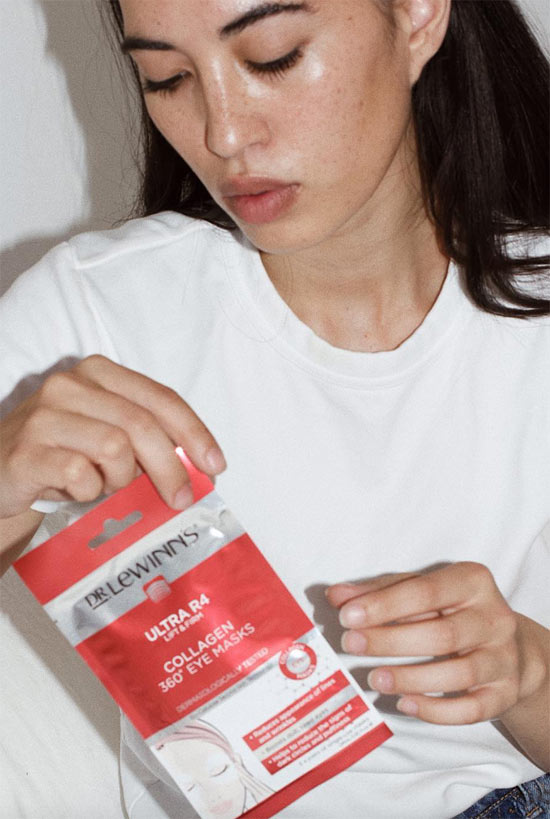
Retinoids
The best skincare ingredients for treating or minimizing the depth of the nasolabial fold are retinoids, a class of compounds that are related to vitamin A. Retinoids are able to regulate cell turnover and increase collagen production in the skin. Increased collagen production thickens the skin and improves its firmness, thereby minimizing wrinkles including laugh lines.
However, retinoids are not without their side effects. They make the skin more sensitive to the sun, and they can also irritate the skin if used too frequently or in a higher dose than the skin can tolerate. This is why it’s important to start out slow, with a retinol product with a lower percentage, and then to slowly increase your dose.
Humectants
While retinoids are by far the best ingredients for smile lines, they are not the only ingredients that can help! Water binding ingredients can act as temporary nasolabial fold fillers, because they can plump the skin up by bringing moisture into it.
These ingredients are called humectants, and they include glycerin, butylene glycol, panthenol, and hyaluronic acid (which is the strongest of the bunch). Almost all moisturizers and serums are made with humectants, but for the best results look for ones that contain microencapsulated hyaluronic acid.
Exfoliants
Chemical exfoliants are an important part of a skincare routine in general, and they are particularly useful for softening fine lines. Dead skin build-up tends to emphasize facial loss of tone, including nasolabial folds, so by exfoliating regularly you can temporarily give the skin a fresher look.
In the long term, regular exfoliation is important for maintaining healthy skin cell function, because it supports the cell turnover rate and improves the ability of other ingredients to penetrate into the skin.
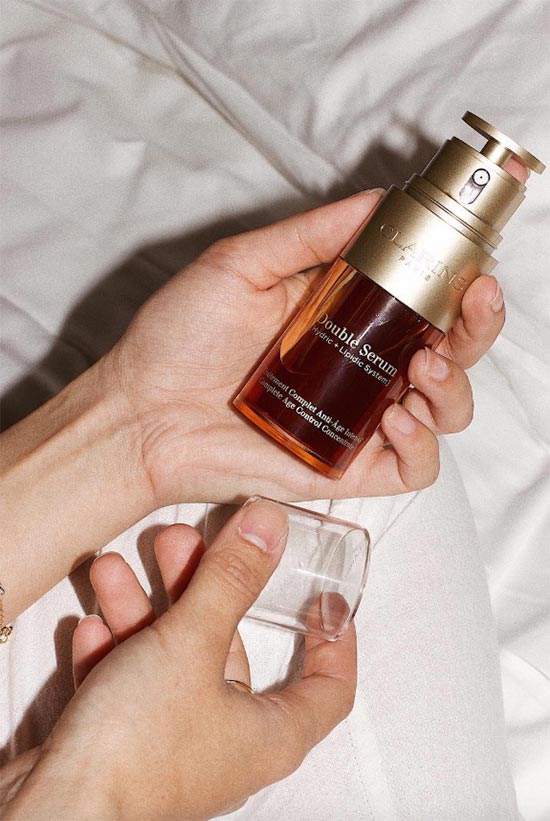
As always, I recommend chemical exfoliation over physical exfoliation because it is gentler but also more thorough, and also because chemical exfoliants often have other benefits. The most common chemical exfoliants in skin care are glycolic acid, salicylic acid, and lactic acid.
Other Anti-Aging Skincare Ingredients
There are lots of fabulous ingredients that are able to somewhat soften the skin and improve its texture, to the point where even fairly pronounced signs of aging like forehead lines and nasolabial folds can be somewhat softened.
These ingredients do so by supporting the skin’s healthy functions in a manner slightly similar but not as extreme as retinoids, and usually with a smaller risk of irritating. Those include vitamin C, which is also fantastic for lightening hyperpigmentation, bakuchiol, as well as certain peptides.
Dermarolling or Microneedling
Dermarolling or needling is a practice in which the skin is gently punctured with a very small needle. This minor trauma triggers a regenerative reaction in the skin as it heals itself from the punctures, and helps increase collagen production. Especially when combined with a regenerative skincare routine, this is one of the most effective ways of promoting collagen production in the skin to reduce the appearance of the nasolabial fold.
This can be done at home with dermarollers, although it requires extreme care and sanitation. Any mistake could lead to infection and significant skin damage. It is much safer performed by a dermatologist or dermatological nurse as an in-office procedure, but in that case it is also more expensive.
Light and Laser Treatments
Much like microneedling, laser treatments and IPL (Intense Pulse Light) treatments are also meant to penetrate through the skin, cause some mild trauma, and thereby encourage collagen production to firm up the skin.
Both laser and light therapy are more frequently recommended for lighter wrinkles and for overall rejuvenation of the skin. They are not ideal for a very targeted nasolabial fold treatment, but they can have a mild firming effect.
These treatments are quite pricy, since they are best done by a doctor or at least a medical aesthetician. There are also at-home light treatments that are beginning to become popular, but at moment there isn’t sufficient evidence for their effectiveness.
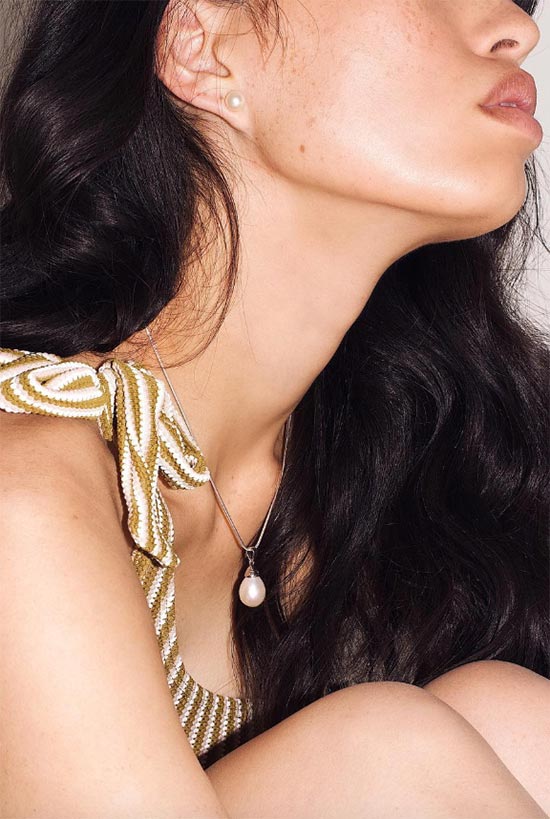
Nasolabial Fold Fillers
Nasolabial fold fillers are probably the quickest and most effective way of quickly getting rid of smile lines, but they also come with an expiry date, a price tag, and a stigma.
The most common fillers used to soften the look of the nasolabial folds are hyaluronic acid injections (Juvederm or Restylane in most countries). The injected hyaluronic acid plumps up the skin from below, thereby smoothing out the skin and making the nasolabial folds much less pronounced.
These kinds of injections last around 3-6 months, and the cost depends on the amount of filler you require, with a syringe costing between $300 and $800, depending on the kind of filler and the clinic you choose. It is important to choose a clinic with excellent reviews and before and after photos that fit in with what you have in mind.
If your doctor is aggressive and uses too much filler you can end up with a puffy look. A bit of puffiness after the procedure is normal, but it should go down after a week, so a great doctor will book you in for a second visit to check results.
Surgery
Plastic surgery is the only long-term option for minimizing or lifting the nasolabial folds. The most common plastic surgery is a mild face list that pulls both the nasolabial fold and the cheeks and jawline so that they become tauter and smoother.
Another option is a cheek implant, which helps with face contouring and also pulls on the skin of the nasolabial fold, which makes it tauter. Lastly, a surgery that removes excess skin by literally cutting out the nasolabial fold is probably the most extreme option.
Plastic surgery, of course, is an expensive measure that requires significant research and a lot of downtime, so it’s definitely not a decision to make lightly.
Can You Prevent Laugh Lines?
As you might have figured by now from my explanation of the skin aging process, you’ve probably realized that you can only prevent laugh lines partially. The slowing of collagen production is a natural and inescapable process, and there is no way to totally stop it. However, it is possible to protect the skin from external causes of collagen degradation!
Avoid the Sun
As I explained earlier, the sun is a major source of destructive free radical damage. By avoiding direct exposure to it you can keep your collagen intact for much longer, and avoid those laugh lines.
Using a good sunscreen that offers broad spectrum protection (i.e. protects from both UVA and UVB rays) as a regular part of your morning skincare routine is one easy way to really get in the habit of sun protection. It is important to remember that our face requires about a ¼ teaspoon of sunscreen to get full coverage (depending on the size of your face), and that we need to reapply after two hours of sun exposure.
Avoiding the sun altogether, wearing a hat, or carrying a parasol are other methods you can use to avoid excessive sun exposure.
Good Lifestyle Habits
Anything that hurts our body will also end up hurting our skin. Leading a healthy lifestyle will definitely ensure that all of our organs function to the best of their ability, and will help the skin look youthful for longer. This includes getting enough sleep, drinking plenty of water, avoiding unnecessary stress, eating a low-glycemic index diet rich in vegetables, and avoiding smoking or excessive drinking.
Use Antioxidants in Your Skin Care
While the sun is the most major source of free radical damage, pollution and cigarette smoke are also culprits that contribute to extrinsic aging and smile lines. You should definitely avoid smoking if you’re concerned about fine lines and deeper divots around your mouth, but you should also make antioxidants a regular part of your skin care.
Antioxidants help stop the destructive chain reaction that pollutants cause in the skin. There are a ton of incredible antioxidants in skin care, with most natural plant extracts and oils having some antioxidant properties. There are also antioxidants that can be added to skin care, like vitamin C, vitamin E, niacinamide, ferulic acid, resveratrol, co-enzyme Q10, alpha-lipoic acid, and a ton more.
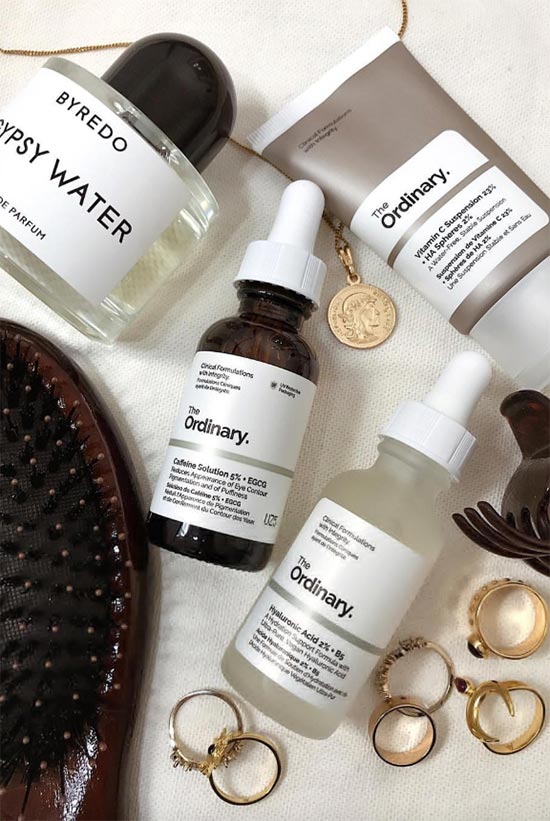
Experiment with Facial Exercises
Take this with a grain of salt, because it hasn’t been proven to work, but many people swear by the effectiveness of facial exercises to prevent loss of tone as we age. The idea is that if the muscles underneath the skin remain tauter, loss of tone including a prominent nasolabial fold would be less significant.
As with all exercises, for these to be effective they have to be done regularly in order to build muscle tone. This won’t have an impact on collagen production, of course, but it may help a little bit anyway.
One exercise recommended by Fumiko Takatsu of Face Yoga Method is to close the mouth tightly, and then to blow air into your cheeks, so that they puff up. Hold that for five seconds, and then move the air into the right side of your mouth, and hold it for another five seconds. Next move the air to the other side of the mouth, then to the area above the lips, and finally to the area below the lips, holding each pose for five seconds.
Another exercise that is recommended is to use the thumbs to pull slightly up on the nasolabial folds while puffing out the upper lip, and just holding that for 30 seconds or so. Alternatively, you can also try pursing your mouth while sucking in the cheeks (a.k.a. fish lips), and holding that for 30 seconds.
Photos via @nikki.cruz

